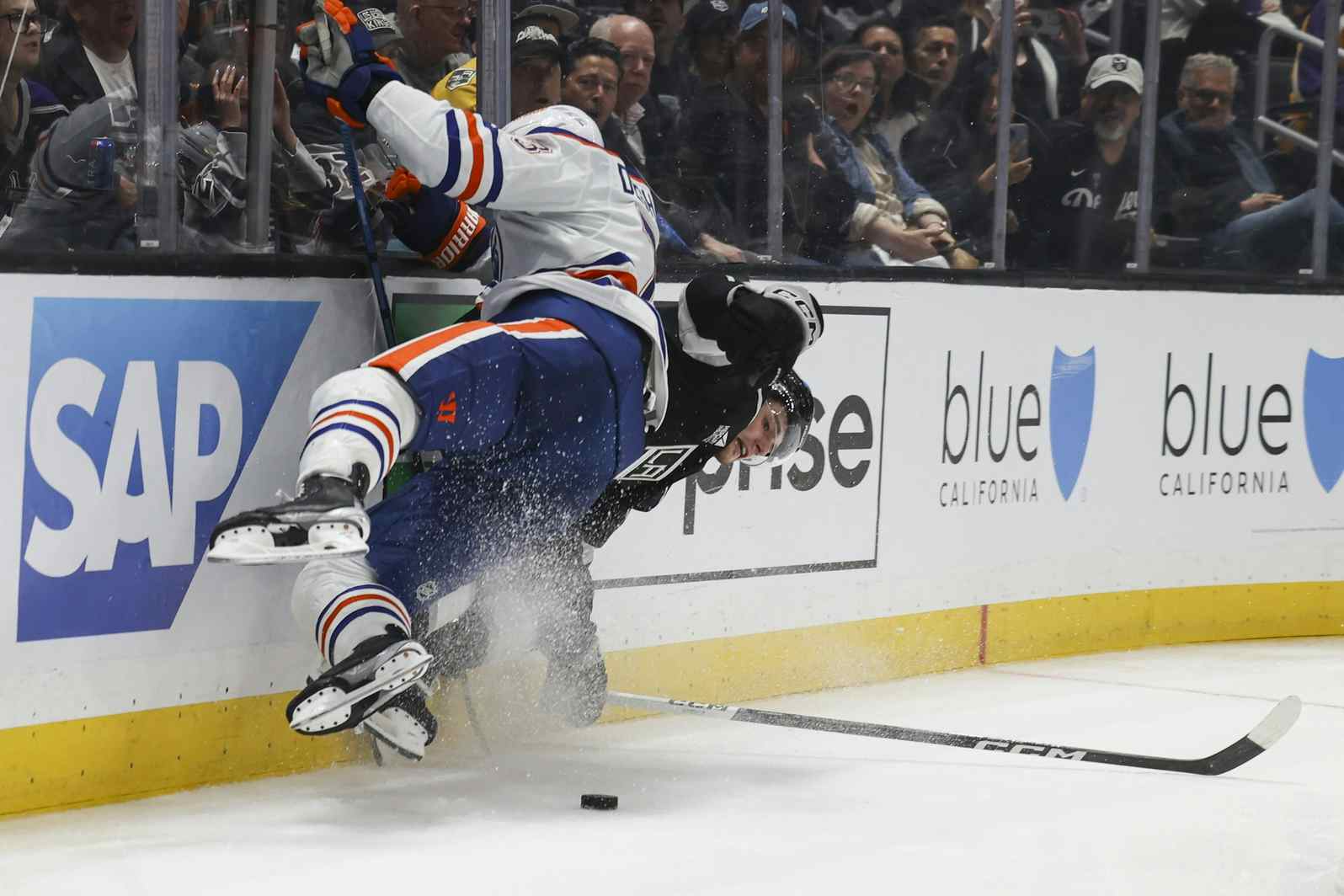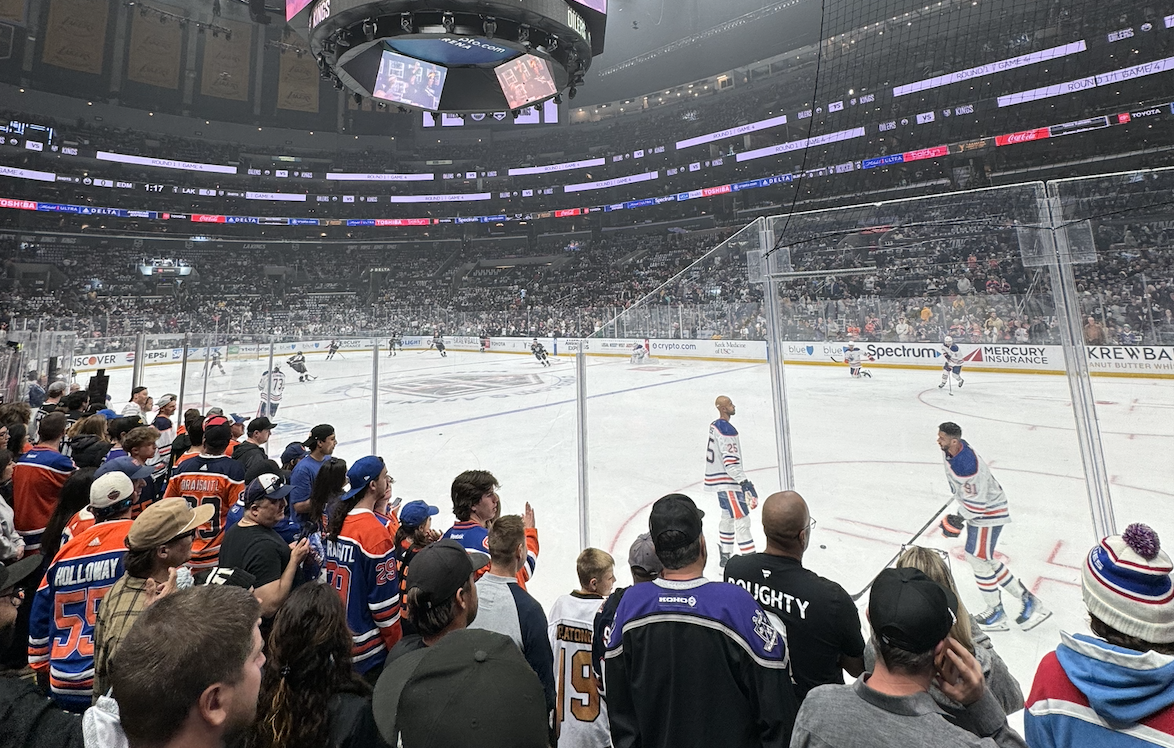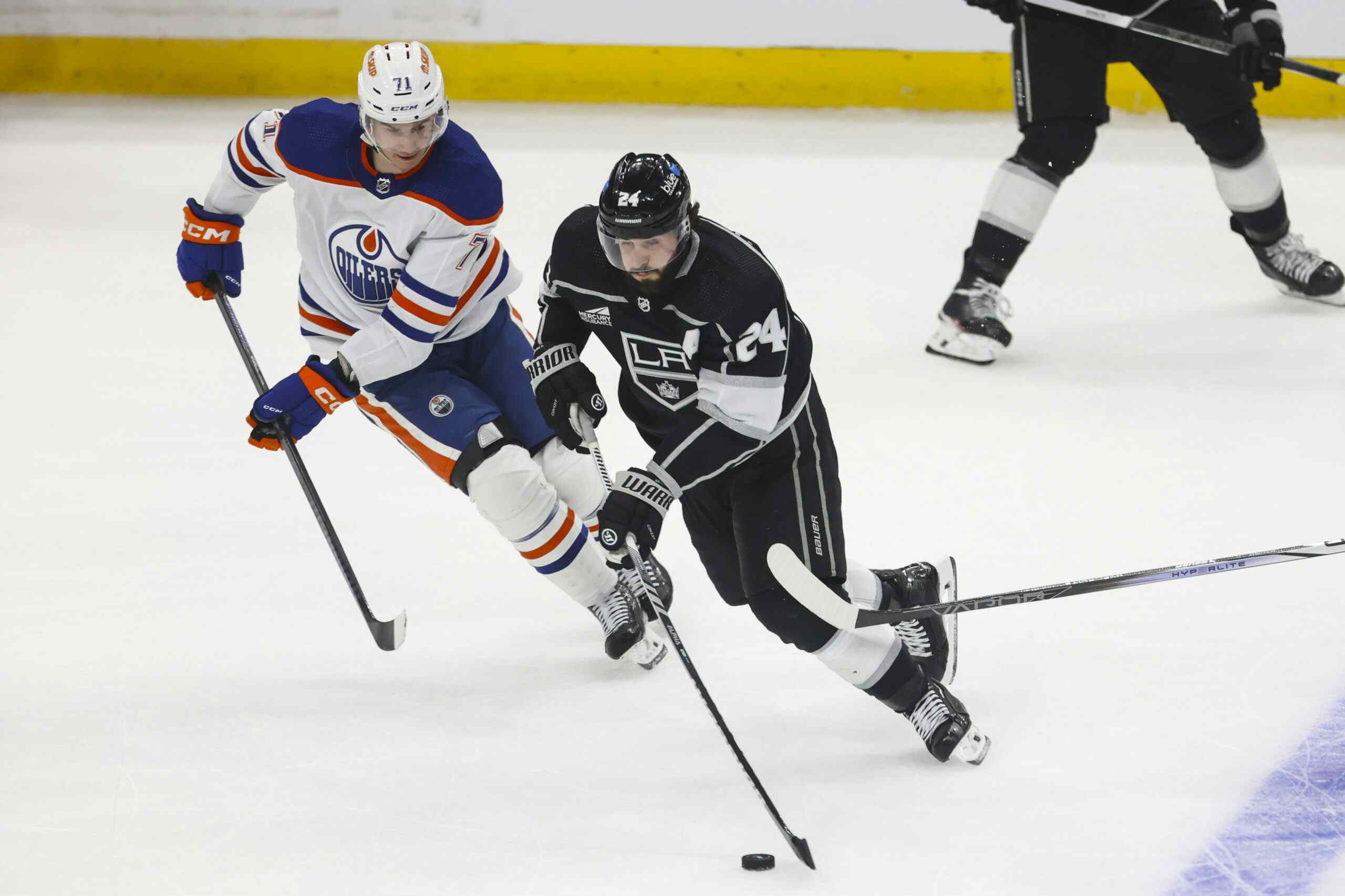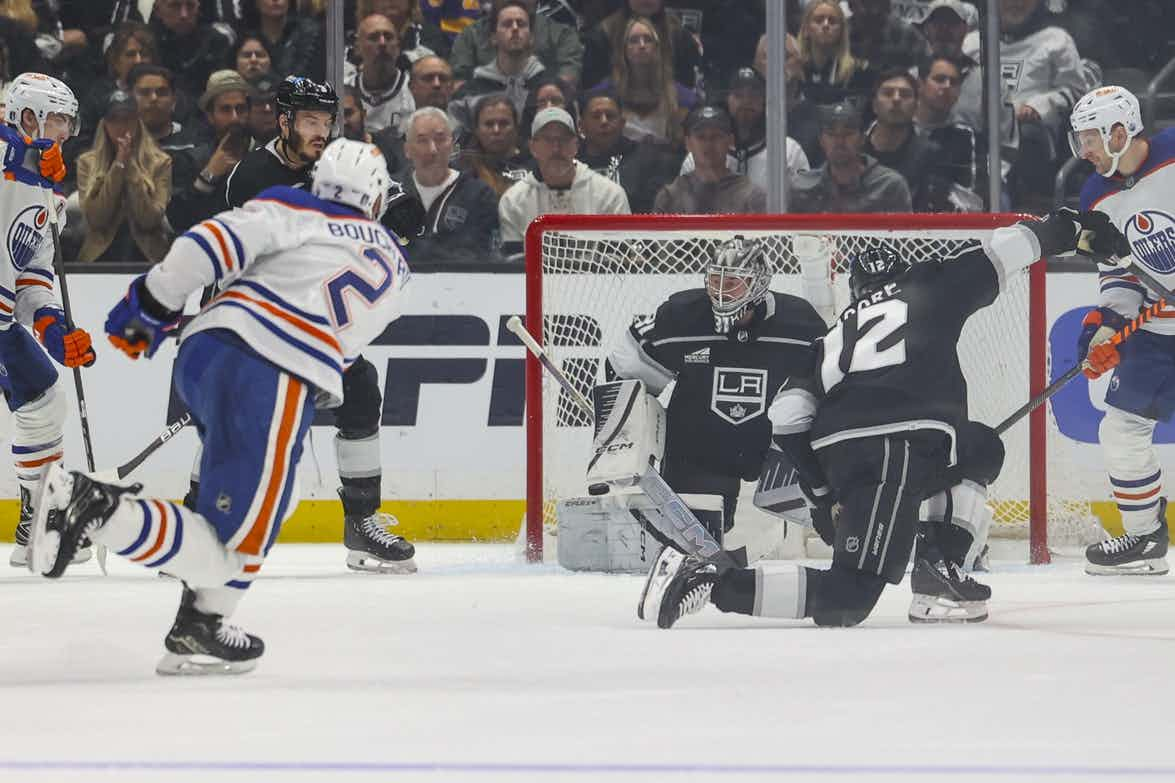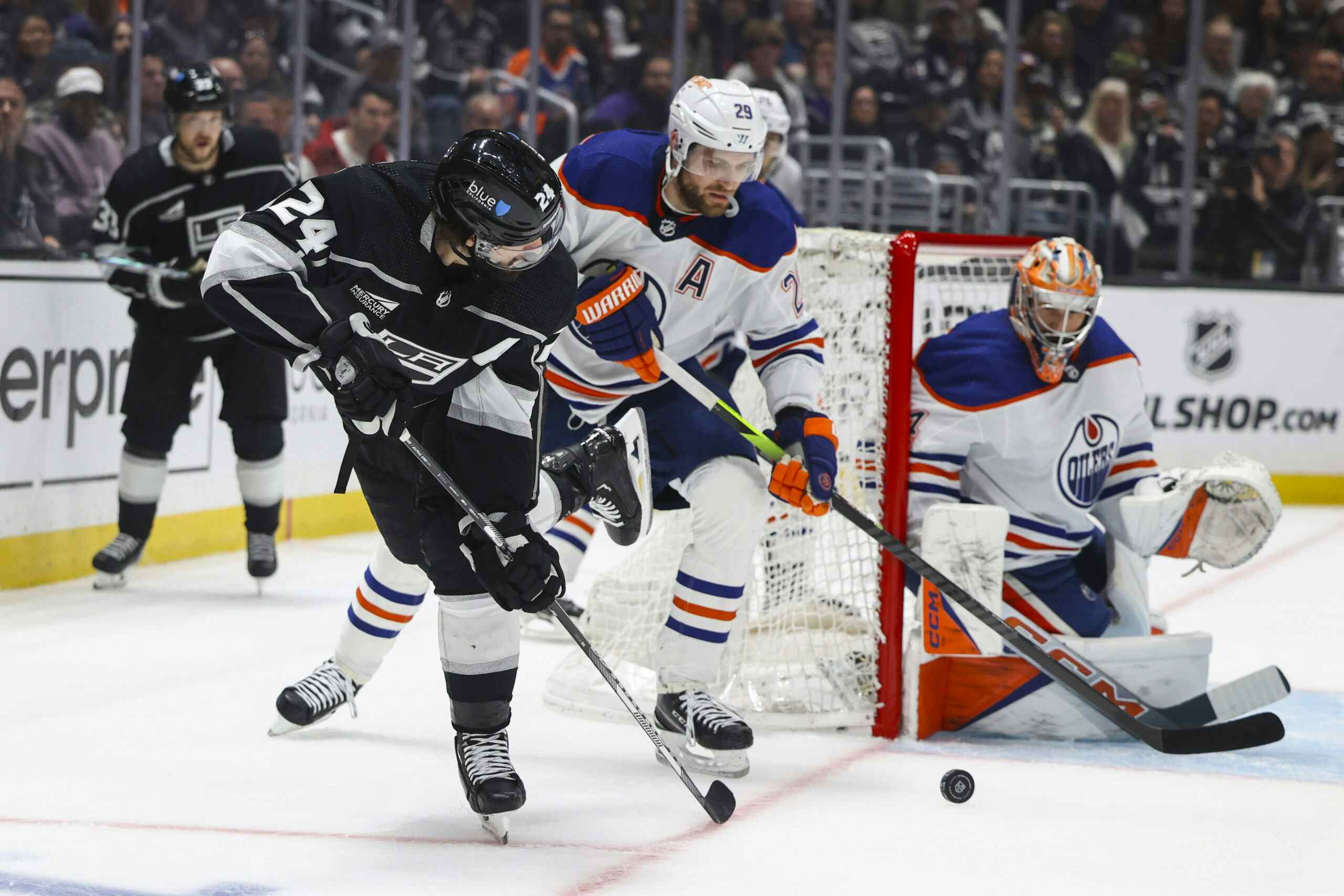How has scouting changed?
By Jason Gregor
9 years ago
David Conte has worked with the New Jersey Devils for 30 years, and he has been their director of scouting for the past 21. In 2006, he was promoted to executive vice president, but he still is heavily involved with scouting.
In the 1990s the Devils had an incredible run of drafting success. Their 1990 draft class had 10 players play at least 116 games. Between 1989-2000 they had 27 draft picks play 400+ games, and many of them were solid NHL players.
Martin Brodeur, Scott Niedermayer, Bill Guerin, Patric Elias, Brian Rolston, Jason Smith, Stephane Yelle, Sergei Brylin, Jay Pandolfo, Brendan Morrison, Denis Pederson, Steve Sullivan, Sheldon Souray, Petr Sykora, Alyn McCauley, Willie Mitchell, Colin White, Scott Gomez, Brian Gionta, Mike Rupp and Paul Martin were some of their best picks.
In those 12 years, the Devils only had two top-five picks, Guerin 5th in 1989 and Niedermayer, 3rd in 1991, but they found quality players throughout the draft.
Conte has seen the scouting landscape change drastically during his time, and we discussed how it has evolved both positively and negatively. (As usual my thoughts are in italics).
Gregor: David, I was going back through your drafting record and it was amazing how many legitimate NHL players you were able to unearth in an ten-year span. What was your secret to your success?
Conte: I think we work with a lot of good people and I try not to think about it and worry more about the next one than the last one.
Gregor: No one’s ever going to hit on everything of course, especially because there is only so many openings on an NHL roster. Do you ever feel like you’re on a hot streak when you’re a scout?
Conte: I think circumstantially in any given year, things can fall in place and you know that things are better than other years. And then other years are more mediocre and there are other years where you can perhaps feel very devastated. For example, one year a long time ago we had Jeremy Roenick and Teemu Selanne and Rod Brind’amour pegged perfectly, like 2, 3, 4, but we picked 12th, and they went 8, 9, 10. It was a considerable drop off to the next player in terms of the value we had for them, so these things can happen. Every year is circumstantial, every year is luck. But if you do your homework over the long-haul I think that you should probably be alright.
**Roenick draft was 1988 when Mike Modano went first overall. The Devils ended up taking Corey Foster and he played 45 NHL games. None of the players taken after Selanne (10th) in the first two rounds became elite NHL players. Tie Domi (27th to Toronto) and Tim Taylor (36th to Washington) were the only players to play more than 700 games. Funny enough, many of the really good players were taken in the 4th round — Mark Recchi, Tony Amonte and Rob Blake — while Alex Mogilny was taken in the 5th round.***
MORE COMPETITIVE

Gregor: David, do you believe that scouting in the last 10-12 years has become way more competitive than how it was in the 90s?
Conte: Absolutely. The computers, the size of the staff, the investment that some teams wisely put into it and the lack of investments some teams don’t put into it. But for the most part, absolutely. People really work very hard at this and they use every avenue they have to help themselves from physical tests, to psychological tests. In fact, there is a bit of a movement by some general managers to limit people from investing in it, which is research and development, which is surprising because it may be the only thing that can give your team an advantage in today’s salary cap world.
***I’d love to know which general managers think this way. I still feel the Oilers have to invest in more pro scouts, or at least get better ones, because their pro scouting record over the past eight years is horrendous.**
Gregor: You were the head scout for a long time, now you’re the director of Hockey Operations and scouting, the Executive Vice President, and you’re still overseeing all of the scouting. As the scouting has become more competitive, how have you had to change to try to stay competitive?
Conte: Well, I think trying to do the same things that we’ve always done. I don’t know necessarily about changing, I think it’s just read the trends of the given year and some years there are different pockets that merit greater attention than other years. And that’s circumstantial too. For one cycle it might be Finland that’s really hot, or Sweden that’s really hot, or the US development program and I think it’s just recognizing that. For example last year it was major junior that was the hotbed for high profile prospects.
But to change? No, I think it’s one of the secrets that we do have, or have had, is continuity where I have a very good understanding of what the people we do have with me are saying and I think that they have a very good understanding of what I’m asking from them. It’s not a moving target, we’re not reinventing the wheel or the process every year, we’re just working hard and trying to be thorough about it the process.
Gregor: Players are becoming more professional at a younger age as far as how they train and how they eat. Is there a smaller gap between the good players and the guys who are right on the cusp, than there was 15 or 20 years ago?
Conte: Oh I think so. I think that the techniques that coaches and strength coaches and general advances in nutrition and discipline, hockey schools and personal trainers. I think it’s really helped the average player to help, well, it stops us from sometimes identifying the great player. I think the neutralizing effect of the fourth liners is far greater than it might have been 15 years ago. The dominance of the first line players is certainly far less than it was 15 years ago.
Gregor: Is that good for hockey or does it make your job harder?
Conte: It makes our job harder and I don’t necessarily think it is good at the young age that we’re so technical and analytical that the game stops being fun for them. Because not many pro players come out of youth hockey, but the sophistication of a peewee team right now is pretty significant.
Gregor: Zach Parise told me he thinks that coaching is on the verge of ruining hockey because it’s too technical and they are taking the creativity out of players. Have you noticed that there are a lot more players that can skate fast, and maybe get to an area, but can’t necessarily do something when they get into the right position?
Conte: Umm…without being critical or specific and I love Zach, I think that Zach is right on the money. I agree with what he says. I think this game sometimes might be better without the structure, but we all want to win and coaching does help you win. If it’s the detriment of the entertainment value, it is, but they’re doing what they need to do to sustain a winning environment and to do so.
The hard work that they put in is phenomenal. I mean the amount of hours that they spend is it sometimes, is it analysis by paralysis or is it paralysis by analysis? [Laughs] You’re just not allowing yourself to grow. And I think that in a lot of cases that the right coaches understand at the end it is mono a mono or it’s player vs. player not coach vs. coach. So it’s a very fine line and I really don’t have an answer for you, I wish I did.
But in time it’s a frustrating thing in every regard because you know they’re doing they’re very, very best and you know that your team is prepared as best as they can be prepared in terms of systems and tactics and conditioning, but are we taking the best out of them by limiting that creativity that Zach might have referred to.
***I think one of the biggest concerns in hockey is too much structure at a young age. We shouldn’t be coaching kids the same systems grown men are using. It makes no sense, just like young kids shouldn’t be playing on NHL ice surfaces. Let them play on smaller surfaces, so they can touch the puck more often and do more stops, starts and turns.**
DRAFT STRATEGY

Gregor: David, every year there’s more and more independent draft places putting out draft guides.
Conte: I’ve noticed that. [Laughs]
Gregor: Do you check other people’s opinions, or do you only focus on what you and your scouting staff have discovered?
Conte: I read everything. I base my opinions only on my staff, but I use everything possible to see if we’re missing something. So we have a player that’s nondescript on our list that’s highly regarded by any source. I research it with the people that I trust and work for me and who are on the payroll because those are the ones that you can hold accountable. So for sure, I don’t consider them irrelevant and I don’t consider them incompetent, but the fact remains that all of these services have a lesser budget to do their jobs than I have to do mine.
Gregor: How much has video helped scouting? Does it make it more accurate or does it sometimes make you analyse too much?
Conte: I think it is probably too much. It’s a little bit of a support that can give you a real familiarization. We do use it; I can’t say that we don’t. I think that sometimes we can spend too much time watching TV about picking up games that we’re not at. I do feel that to make areal serious decision that has serious impact; you need to be there in person. And you need to have a feel for the situation because you don’t see everything on the video.
Does it help? Sure it can help but there is only so many hours that we can devote to doing this job. I think we devote them wisely and to pertinent information and to get people’s opinions that are really relevant and who are accountable to those opinions.
Gregor: What is the ratio of live games to video that you will watch on a player? Do you need to see, let’s say, 20 live games?
Conte: Well I would love to get to that many. That’s one of the problems now with hockey and expansion at every level of junior and expansion at college and the emergence of European countries that didn’t really have impact before, Switzerland, Denmark, the breakup of the Soviet Union and right now it’s Czech and Slovakia not Czechoslovakia. So that, yeah, it makes it much more difficult because there are more and more teams and there is less and less weekday games.
So the difficulty and the logistics of travelling and all that make the individual coverage of a player much more difficult than it used to be. That does impact your productivity and your accuracy because you’re guessing more on less information. You’re speculating more on less information as opposed to maybe really knowing a player really, really very well when there were half the amount of the junior teams.
Gregor: And that’s why teams had to increase their scouting staff. But as you increase your scouting staff it increases differing opinions. When the New Jersey scouting staff comes together and guys sit around the table and guys debate, how differing do you want the opinions?
Conte: We do it slightly different. We all do reports every game we go to, we add them all up and compare them and I try to create a formula and then I ask them what’s wrong with this player. I don’t really think debating each other is fruitful because you all see different games and you see different amounts on different players. So for example you don’t send everyone to the World Juniors and the ones that were there have a weighted opinion of Aaron Ekblad for example. So I’d rather go about it in a more constructive manner. Who is the player each scout would want, and then after that determination the next step is me and the final step is Lou (Lamoriello) to validate what I recommend.
***Very interesting response on how the Devils rank players. Conte also told me that the Devils won’t have any lengthy draft debates/meetings leading up to the draft, “The kids are done playing, they can’t get better or worse. We have all the information we need.” That makes a lot of sense. It always bothered me that Tambellini suggested the Oilers hadn’t made their mind up until the night before the draft. Teams should have their list finalized before the draft, because the majority of players haven’t played for months.**
Gregor: Is it more work when you’re drafting in the middle because there is so much more that can happen in front of you, compared to if you’re drafting in the top spots?
Conte: Oh absolutely. It was an easy night’s sleep when we were picking third and took Scott Niedermayer. [Laughs]Picking out Bryan Rolston (11th) was a little more difficult. And as you go down farther, generally speaking when you are in the 20-30 range, you get a player that is in your 15-25 range.
I really think the hardest picks are the 6th-15th because there is a lot of consensus because of all of these reports. People feel a lot of pressure, and because of our past record, I appreciate your compliments of our record, it also gives me a little bit more courage because I’d be given the benefit of the doubt. Other people that are trying to establish some success in their position with their teams that influence is certainly there, as it was with me in the beginning.
Gregor: It starts with scouting, but once you draft a player much of his success depends on how the organization develops him. What are the challenges of that process and what is the challenge from going to scouting to then handing the player off to the men in charge of developing him?
Conte: Well that’s certainly a three-pronged thing from development to coaching to drafting, it’s all important. And your strength coaches are important, your PR people are important for how they monitor certain things and what you do with them.
Unfortunately, NHL teams have had a lot of restrictions on them as part of the CBA that do curtail you doing the most you can for that player. And in turn they’re in the hands, often, of their own subsidized personal trainers and others and it’s not necessarily in the best interest of the team because they don’t really have control over it.
Most times, and sometimes it’s all very positive, but as a purist, I’d rather it be in the control of our team and not outside sources. We are exposed to outside influences all of the time because your players could play for a lot of different teams all while under contract with you. From their club team to Team Canada world juniors, to the World Championships and so on and so forth. It is perfectly correct to support all of those things, but as a team it is a concern.
And some of the injuries, and the medical response to those injuries if you have them; there is a lot of variables. We can only have a player for one week in the summer. I don’t know where that’s productive for the player or the teams, but that’s the rule.
***This has been one of the Oilers many organizational flaws. They have not done a great job developing players. You don’t send players to the AHL, when they still have CHL eligibility, but don’t dress them every game. They did this with Curtis Hamilton, Ryan Martindale and a few others. The Oilers need to recognize that young players need to play to improve, they don’t get better playing 10-12 minutes a night in 40-50 AHL games compared to playing first line minutes for 72 games in junior.
I believe the Oilers’ future would look better if Darnell Nurse spends another year in junior, one of Oscar Klefbom and Martin Marincin starts the season in the AHL, and they send the #3 pick (assuming it is one of the centres) back to junior.
I know people will say Reinhart has nothing left to prove in junior, but I don’t see it that way. You can always work on your game, but for me it makes no sense to have Ryan Nugent-Hopkins and a rookie centre in your top-six. If they keep Sam Gagner, it makes even less sense to dress an 18-year-old on the third line. I understand the urge to want to dress a #3 overall pick, but the Oilers need to fight that urge and let him mature one more year in junior.**
Recently by Jason Gregor:
Recent articles from Jason Gregor

